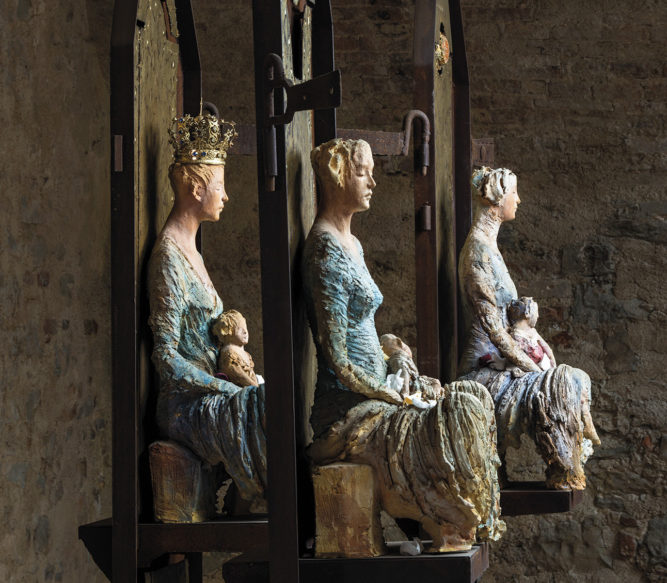Riva’s Contemporary Mother & Child Portrayals
 Until Jan. 31: NATUS. Salone di Donatello, Basilica of San Lorenzo, Piazza San Lorenzo. Open Monday to Saturday 10 am – 5 pm. Free admission.
Until Jan. 31: NATUS. Salone di Donatello, Basilica of San Lorenzo, Piazza San Lorenzo. Open Monday to Saturday 10 am – 5 pm. Free admission.
Natus is an art show inside the San Lorenzo Church found under the courtyard past the ticket booth all the way to the back and down a staircase. On display are 22 terra cotta and bronze sculptures, all created by artist Ugo Riva, inspired by verses by the poet Davide Rondoni, which are also displayed.
Clearly illustrated is Riva’s desire to create these pieces fueled by the natural and intimate relationship between mother and child in addition to exhibits portraying other aspects of the life cycle. Looking at these sculptures, the visitor can quickly grasp the reference to biblical characters, such as the Virgin Mary and her child, but at the same time, idea could be more universal, simply revealing the bond separate from iconic imagery. Click here to see a slide show of the exhibited works.
One of the more dynamic pieces of the collection is the one allowing guests to walk 360 degrees around it: a tree, not with leaves like one would imagine, but filled with human forms radiating life and beauty.
There are a variety of influences in Riva’s work: his sculpture fuses the canons of Expressionism in the representation of feelings and emotion, with figurative work based on the study of Greek statues and Italian Renaissance art. The artist’s choice of medium ranges from bronze and metal to glazed terra cotta, all delicately molded with soft colors that lend an antique feel. Much of the painted terra cotta that compose the garments is richly textured, giving movement to the fabric, which is softly draped.
Three mothers are depicted side by side sitting upon respective thrones. Immediately the eye is drawn to the mother in the middle with a gold crown placed upon her head as a universal archetype going beyond religious stereotypes.
Not all of the statues display the child as an infant, but even as a toddler or older, revealing the relationship to be an intimate one. This idea is especially evident in one of the exhibits where the child is seated upon the mother’s lap where they are intensely gazing at each other. The connection is palpable through their looks; Riva captured an intimate and small moment between them that could be as relevant today, just as it was centuries ago. (kayla smith)
